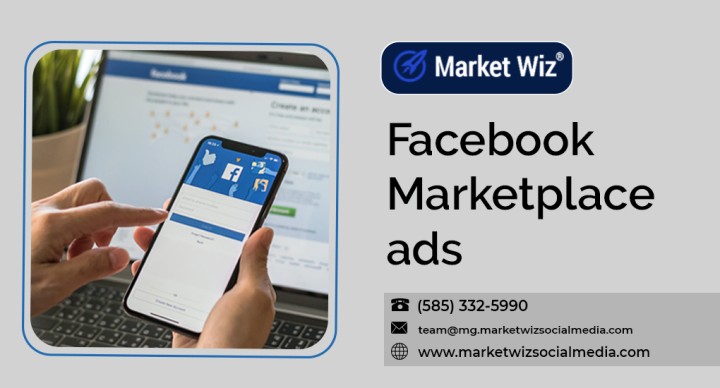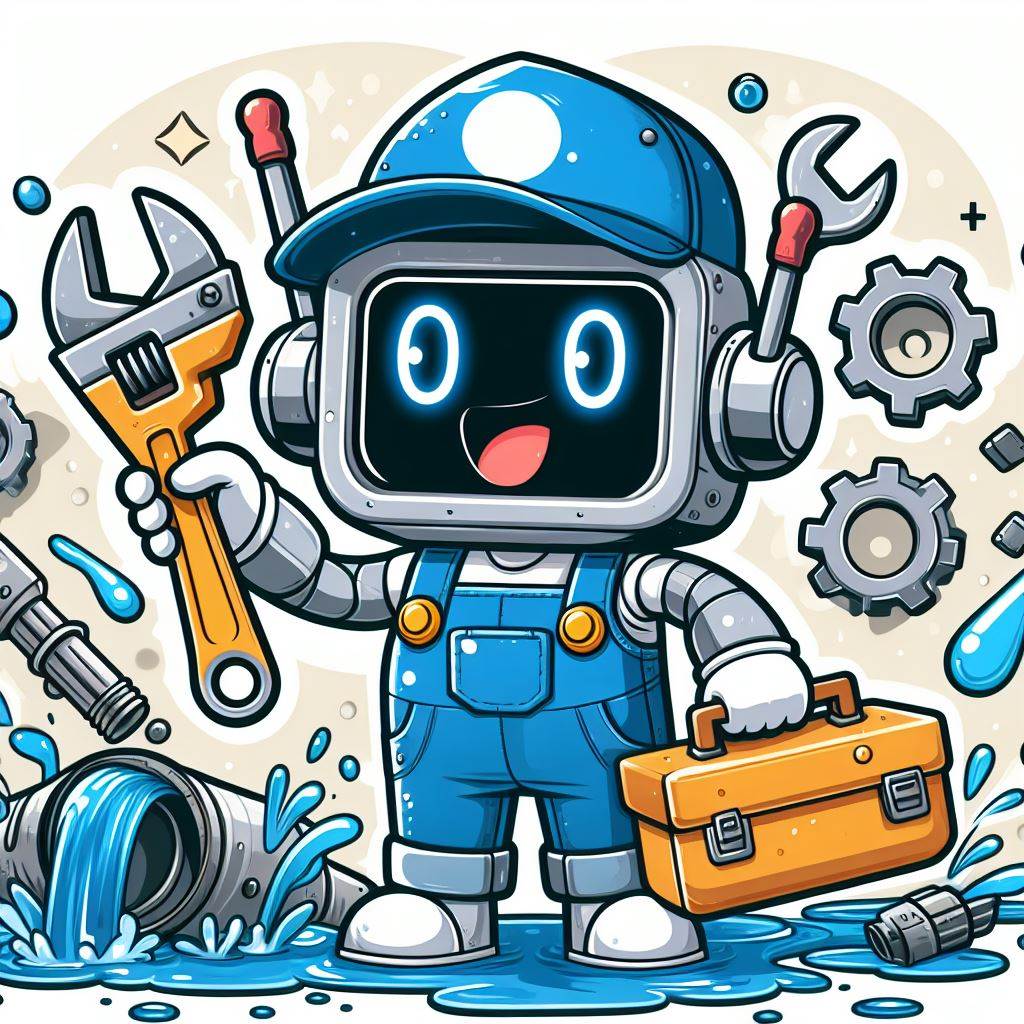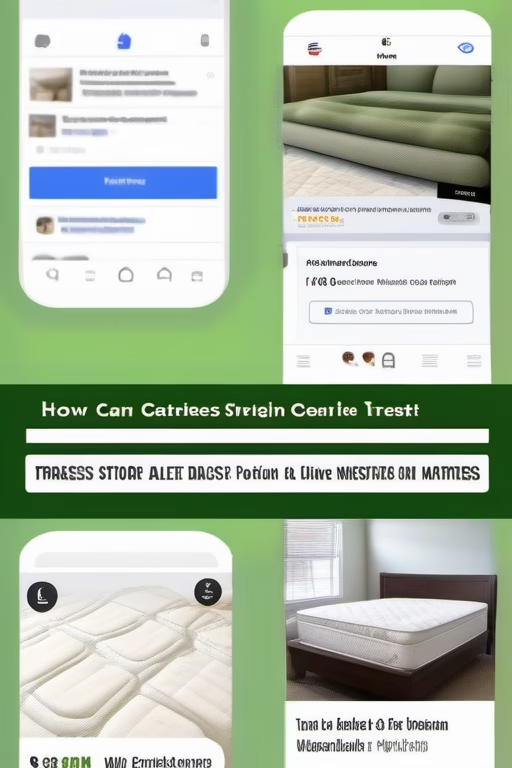How to Sell More Furniture: Proven Strategies for Furniture Stores
Your Comprehensive Guide by Market Wiz
Table of Contents
- Introduction: Embracing the Digital Shift in Furniture Sales
- Understanding the Furniture Market
- Overview of Proven Sales Strategies
- Brick & Mortar vs. Online Sales
- SEO Strategies for Furniture Stores
- Content Marketing and Blogging
- Social Media Marketing
- Email Marketing & CRM Integration
- Local Marketing and Google My Business
- Low-Budget Advertising Alternatives
- Utilizing Digital Analytics and Tools
- Case Studies and Success Stories
- Common Challenges and Solutions
- Future Trends in Furniture Sales
- Conclusion & Next Steps
- Frequently Asked Questions (FAQs)
- Additional Keywords for SEO & Content Strategy
Introduction: Embracing the Digital Shift in Furniture Sales
The furniture industry has experienced rapid transformation with the advent of digital marketing. Gone are the days when furniture sales relied solely on in-store experiences and traditional advertising. Today, furniture stores must harness the power of online channels to reach a wider audience, build brand credibility, and drive sales.
In this comprehensive guide from Market Wiz, we explore proven strategies for selling more furniture. We’ll cover a wide range of topics—from advanced SEO techniques and content marketing to social media engagement and local optimization. Whether you are a large furniture retailer or a boutique store, these strategies are designed to help you boost online visibility, attract high-quality leads, and convert visitors into loyal customers.
For more digital marketing insights, be sure to check out our Digital Marketing Insights page. Let’s dive into the world of online furniture sales and discover how to transform your business.
Understanding the Furniture Market
The furniture market is dynamic and diverse, serving a wide range of consumers—from first-time homeowners to luxury clientele. Factors such as design trends, sustainability, and functionality play a significant role in influencing purchasing decisions.
Buyers today are more informed and tend to research extensively online before making a purchase. They compare prices, read reviews, and seek recommendations to ensure they get the best value for their money. As a result, having a strong online presence is critical for furniture stores.
Utilize market research tools such as Statista and IBISWorld to gather data on consumer trends, popular styles, and competitive pricing. This information will help you tailor your marketing strategy to meet the evolving needs of your target audience.
Overview of Proven Sales Strategies
To succeed in today’s competitive environment, furniture stores need to implement a blend of digital strategies that drive organic traffic and convert leads into sales. Key strategies include:
- SEO Optimization: Enhancing your website’s visibility on search engines through keyword research, on-page, and off-page SEO.
- Content Marketing: Creating valuable and engaging content that educates your audience and builds trust.
- Social Media Engagement: Using platforms like Facebook, Instagram, and Pinterest to showcase your products and connect with customers.
- Email Marketing: Nurturing leads with targeted, personalized email campaigns.
- Local Marketing: Leveraging local SEO and Google My Business to capture nearby customers.
- Low-Budget Advertising: Employing cost-effective advertising alternatives to supplement your organic efforts.
- Analytics and Optimization: Using digital tools to track performance and continuously improve your strategy.
These strategies, when combined, create a robust digital marketing ecosystem that drives long-term growth and sustainable sales.
Brick & Mortar vs. Online Sales
Although traditional in-store sales are still important, online sales have become increasingly vital in the furniture industry. A dual-channel strategy allows you to reach customers who prefer the tactile experience of a showroom while also capturing the growing number of buyers who shop online.
Establishing a strong online presence not only broadens your market reach but also provides valuable data that can inform both digital and offline sales strategies. Combining in-store experiences with robust online marketing ensures that you meet customers wherever they are.
SEO Strategies for Furniture Stores
Search Engine Optimization (SEO) is the cornerstone of effective online marketing. For furniture stores, SEO strategies should focus on both organic traffic and local visibility.
Keyword Optimization: Conduct thorough keyword research using tools like Google Keyword Planner and SEMrush. Focus on terms such as “modern furniture store,” “affordable home furnishings,” and “luxury furniture online.” Incorporate both short-tail and long-tail keywords into your website content.
On-Page SEO: Optimize your title tags, meta descriptions, header tags, and image alt text. Ensure that your content is well-structured and includes relevant keywords naturally.
Off-Page SEO: Build high-quality backlinks by guest posting on industry blogs, collaborating with influencers, and participating in local directories. Backlinks from reputable sites enhance your site’s authority and boost your rankings.
Local SEO: Optimize your website for local search terms and claim your Google My Business listing. Ensure that your business information is consistent across all platforms to improve your local search rankings.
Content Marketing and Blogging Strategies
Content marketing is an essential tool for engaging your audience and establishing your brand as an industry authority. High-quality content can drive organic traffic, nurture leads, and ultimately increase sales.
Blog Posts: Write informative articles on topics like “How to Choose the Right Sofa for Your Living Room” or “Top Trends in Home Office Furniture.” Use in-depth guides, product comparisons, and customer testimonials to build credibility.
Video Content: Create video tours of your showroom, product demos, and customer reviews. Video content is highly engaging and can be shared across multiple platforms.
Infographics: Develop infographics that visually summarize product features, benefits, and installation tips. These are easily shareable on social media and can drive significant traffic.
Incorporate internal links to related blog posts and external links to authoritative sources such as Houzz or Architectural Digest to further enhance the value of your content.
Email Marketing & CRM Integration
Email marketing remains one of the most effective ways to nurture leads and convert them into customers. Build a strong email list by offering incentives such as exclusive discounts, free guides, or early access to new collections.
Use automated email campaigns to send personalized follow-up messages based on customer behavior and preferences. Integrate your email marketing platform with your CRM system to centralize customer data, segment your audience, and deliver targeted content that drives conversions.
This integration not only improves engagement but also provides valuable insights that allow you to continuously refine your marketing strategies.
Leveraging SEO & Local Marketing
SEO is critical for ensuring that your furniture store is easily discoverable online. Focus on both on-page and off-page optimization:
- On-Page SEO: Optimize your website’s structure, content, and metadata with targeted keywords relevant to furniture sales.
- Off-Page SEO: Build quality backlinks through guest posts, collaborations, and local directory submissions.
- Local SEO: Use location-specific keywords and claim your Google My Business listing to attract local customers.
These tactics will help improve your search engine rankings and drive high-quality organic traffic to your website.
Utilizing Digital Analytics and Tools
Data-driven decision making is at the heart of successful digital marketing. Use tools such as Google Analytics, Google Search Console, SEMrush, and Ahrefs to monitor your website’s performance and measure the effectiveness of your SEO, content, and social media strategies.
Key metrics to track include organic traffic, bounce rates, conversion rates, and keyword rankings. Regularly review these KPIs to refine your strategies and improve overall ROI.
A/B testing different ad creatives, landing pages, and email campaigns can also provide insights that help you optimize your digital marketing efforts.
Case Studies and Success Stories
Real-world examples can provide powerful insights into how effective digital marketing strategies drive sales. Consider these case studies:
Case Study 1: A national furniture retailer revamped its website with a focus on SEO and content marketing. The integrated strategy led to a 250% increase in organic traffic and a 180% boost in online sales within a year.
Case Study 2: A boutique furniture store used targeted social media campaigns and email marketing to engage local customers. Their efforts resulted in a 200% increase in store visits and a significant rise in conversions.
Case Study 3: A luxury furniture brand combined high-quality video content with AI-powered lead nurturing. The personalized approach improved customer engagement by 170% and led to a 160% increase in high-value transactions.
Common Challenges and Solutions
While the digital landscape offers vast opportunities, furniture stores often face challenges in executing a successful online marketing strategy. Some common challenges include:
- High Competition: The market is crowded, so differentiating your brand through unique content and exceptional customer service is crucial.
- Content Creation: Producing high-quality, engaging content consistently can be resource-intensive. Develop a content calendar and consider outsourcing if necessary.
- Technical SEO Issues: Website performance issues such as slow load times or poor mobile responsiveness can negatively affect user experience and rankings. Regular technical audits are essential.
- Data Overload: With many metrics to track, focus on the key performance indicators that directly impact lead generation and conversions.
- Maintaining Consistency: Ensure that your messaging and branding are consistent across all channels, including your website, social media, and email campaigns.
Addressing these challenges with proactive strategies and continuous optimization will help you maximize your digital marketing efforts.
Future Trends in Digital Marketing for Furniture Stores
The digital marketing landscape is constantly evolving, and staying ahead of emerging trends is essential for long-term success. Future trends that will shape the furniture sales industry include:
Voice Search Optimization: As voice assistants become more prevalent, optimizing your content for conversational queries will be increasingly important.
Artificial Intelligence: Advances in AI will enable even more personalized and automated lead nurturing, enhancing conversion rates.
Video and Interactive Content: Video tours, virtual reality showrooms, and interactive product demos will provide immersive experiences that drive engagement.
Mobile-First Strategies: With mobile usage continuing to rise, ensuring a seamless mobile experience is essential for capturing online traffic.
Local Personalization: Tailoring content and offers to local markets will help you connect with regional customers and drive higher conversion rates.
Conclusion & Next Steps
AI-powered lead automation is revolutionizing the way furniture stores convert leads and drive sales. By automating personalized follow-ups and leveraging data-driven insights, you can transform your digital marketing strategy and achieve a top ranking on search engines—all without the need for expensive ads.
At Market Wiz, we are committed to equipping furniture retailers with innovative digital marketing strategies that deliver measurable results. The comprehensive techniques outlined in this guide—from advanced SEO and content marketing to social media engagement and AI-powered follow-ups—provide a clear roadmap for boosting your online visibility and driving sustainable growth.
Your journey to digital marketing excellence starts today. Embrace these strategies, continuously monitor your performance with analytics, and adapt to emerging trends to stay ahead of the competition. For more expert advice and additional resources, please visit our Digital Marketing Insights and About Us pages.
Frequently Asked Questions (FAQs)
1. What is AI-powered lead automation?
It is the use of artificial intelligence to automate follow-up communications with leads, based on their behavior and interactions.
2. How can AI-powered follow-ups boost shed sales?
They ensure timely, personalized communication that increases engagement and conversion rates.
3. What data is analyzed for AI follow-ups?
Data from website visits, email interactions, social media engagements, and CRM systems are analyzed to understand lead behavior.
4. How does lead scoring work?
Machine learning algorithms assign scores to leads based on their engagement levels and likelihood to convert.
5. Can AI personalize email campaigns?
Yes, AI tailors email content to match each lead’s specific interests and behavior.
6. What role do chatbots play?
Chatbots engage visitors in real time, answer frequently asked questions, and capture lead information.
7. Are AI-powered follow-ups cost-effective?
Yes, they reduce manual work and improve conversion rates, offering a high return on investment over time.
8. How does predictive analytics improve follow-ups?
It forecasts customer behavior and optimizes the timing of follow-up messages to maximize conversions.
9. Can AI manage a large volume of leads?
Yes, AI systems are highly scalable and can handle thousands of leads simultaneously.
10. Why is CRM integration important?
It centralizes customer data, enabling more effective segmentation and personalized follow-ups.
11. What is natural language processing (NLP)?
NLP helps AI systems understand and generate human-like text, improving the quality of automated communications.
12. How quickly do AI systems adapt?
They continuously learn from new data and refine their algorithms, often showing improvements within months.
13. Can AI-powered follow-ups improve customer retention?
Yes, they help maintain continuous, personalized engagement that fosters long-term customer relationships.
14. Are AI systems customizable?
Yes, AI solutions can be tailored to reflect your brand’s voice and target specific customer segments.
15. What industries benefit most from AI follow-ups?
Industries with long sales cycles and high-value transactions, such as furniture, automotive, and outdoor building, benefit significantly.
16. How do AI follow-ups reduce manual labor?
They automate repetitive follow-up tasks, allowing your team to focus on closing deals and high-value activities.
17. What is A/B testing?
A/B testing compares different versions of your follow-up messages to determine which performs better, enabling continuous optimization.
18. Can AI integrate with social media?
Yes, many AI platforms integrate with email, SMS, chatbots, and social media to provide a unified follow-up experience.
19. How do I measure the success of AI-powered follow-ups?
Monitor conversion rates, response times, engagement levels, and overall ROI using digital analytics tools.
20. How often should I review my AI strategy?
Regular reviews, ideally monthly or quarterly, ensure that your strategy remains effective and adapts to market changes.
21. Can AI help with upselling?
Yes, AI can analyze customer behavior to identify upsell opportunities and tailor follow-ups accordingly.
22. What are the upfront costs of implementing AI follow-ups?
Costs vary by solution, but many scalable options offer strong ROI through improved efficiency and conversion rates.
23. How important is data in AI follow-ups?
Data is critical as it informs lead scoring, personalization, and the continuous refinement of your follow-up strategies.
24. What technical support is needed for AI systems?
Proper training and ongoing technical support are essential for smooth implementation and long-term success.
25. Where can I find more resources on AI in sales?
Visit our Digital Marketing Insights page and check out expert articles on Forbes and Entrepreneur.
Additional Keywords for SEO & Content Strategy
- ai lead followups
- automated lead nurturing
- ai sales automation
- predictive analytics sales
- crm integration ai
- chatbot followups sheds
- personalized email campaigns ai
- machine learning in sales
- ai email drip campaigns
- intelligent lead scoring
- data-driven sales optimization
- ai for shed sales
- automated sales funnel ai
- ai marketing strategies sheds
- innovative lead nurturing ai
- ai digital transformation in sales
- sales conversion optimization ai
- ai in customer retention
- efficient lead followups
- advanced ai sales tools
- ai integration for sales
- followup automation best practices
- ai-driven sales insights
- market wiz ai lead followups
- organic lead nurturing sheds
Final Thoughts
AI-powered follow-ups are transforming the sales landscape for furniture and outdoor building sellers. By automating personalized communications and leveraging advanced analytics, you can create a more efficient, scalable, and effective sales process. This innovative approach not only increases conversion rates but also frees up valuable resources, enabling your sales team to focus on closing deals.
At Market Wiz, we are committed to providing you with the digital marketing strategies and insights needed to stay ahead in a competitive market. The techniques outlined in this guide—from advanced SEO and content marketing to AI-driven lead nurturing—offer a clear roadmap to achieving sustainable growth and a top search ranking.
As the digital landscape continues to evolve, staying informed about emerging trends and continuously optimizing your strategy will be key to long-term success. Embrace the power of AI-powered follow-ups, invest in the right tools, and watch your shed sales soar to new heights.
For further expert advice and additional resources, please visit our Digital Marketing Insights and About Us pages. Begin your journey to sales excellence today and transform your shed business into a market leader!


















Social Media Marketing Strategies
Social media platforms are powerful channels for building brand awareness and driving traffic. Furniture stores can leverage platforms such as Facebook, Instagram, Pinterest, and LinkedIn to engage with potential customers.
Facebook & Instagram: Use high-quality visuals, stories, and live videos to showcase your products and share customer experiences. Target specific demographics through paid and organic strategies.
Pinterest: Create themed boards featuring interior design ideas, DIY projects, and furniture trends. Pinterest is especially effective for visually-driven content.
LinkedIn: Share thought leadership articles and industry insights to connect with professionals and influencers in the home furnishing sector.
These efforts not only drive direct traffic but also enhance your overall brand reputation online.